Use flower symmetry as a way to explain symmetry to children, then create beautiful symmetrical flower drawings with these printable draw-the-missing-half art prompts!
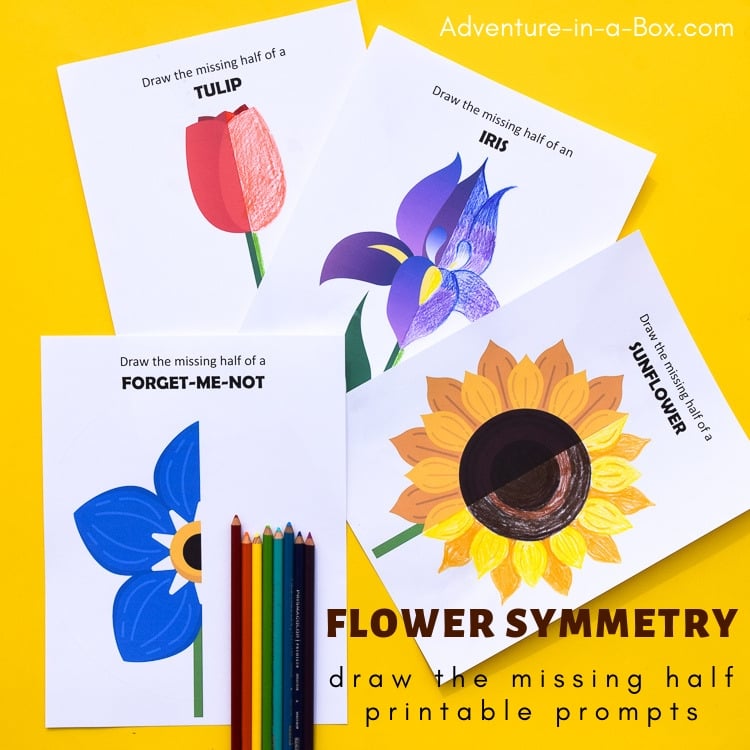
Explaining the concept of symmetry doesn’t have to be abstract and theoretical. A good start to the conversation about symmetry with children can be a look in the mirror. As it turns out, the vast majority of animals, including humans, are roughly symmetrical. So are plants. In fact, symmetry and nature make a winning combination – a beautiful, colourful and hands-on study!
In the past, we offered printable art prompts for studying symmetry with insects (drawings) and with leaves (real). Our kids love these prompts that challenge them to create the missing half of the object, based on the understanding that it’s symmetrical to the pictured half. It’s challenging, but fun! My son has been taking the prompts out every year since he was three. Up until now, his favourite pack consisted of insects’ missing halves. But this spring, we decided to take a look at flowers. My son loved this flower pack as well. He couldn’t wait to work on it!

Flowers are very interesting – they can be used for studying not one, but two types of symmetry.
Flower Symmetry
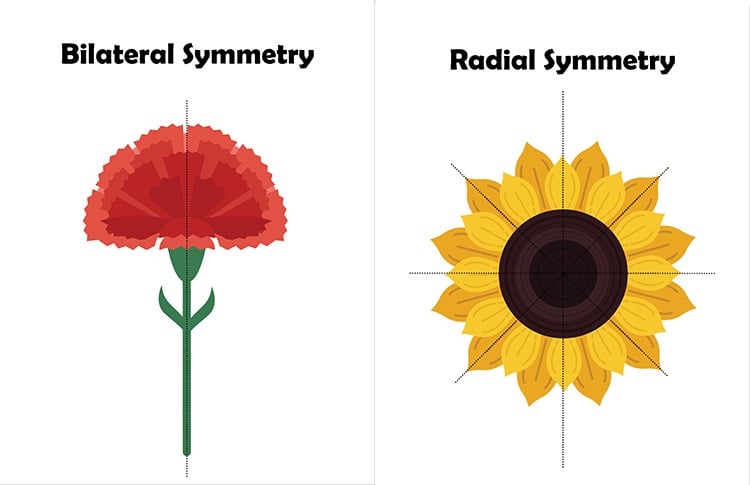
First, bilateral symmetry. Something can be called bilaterally symmetrical if it can be seen to have roughly mirror image halves on either side of a dividing plane—same left and right sides. Humans are bilaterally symmetrical, and so are 99% of other animals, including insects, as seen in the insect drawing prompts. Flowers can be seen as bilaterally symmetrical too, if only from a certain angle.

But many flowers are, in fact, radially symmetrical. This type of symmetry is rarer in nature. Some examples include jellyfish, starfish, many viruses – and flowers. Radially symmetry describes objects that resemble a pie, where several cutting planes produce roughly identical pieces radiating from a central point. In other words, if an object is radially symmetrical, you can imagine how it looks even if you only see a quarter of it (or, depending on the object, one tenth – or even less).
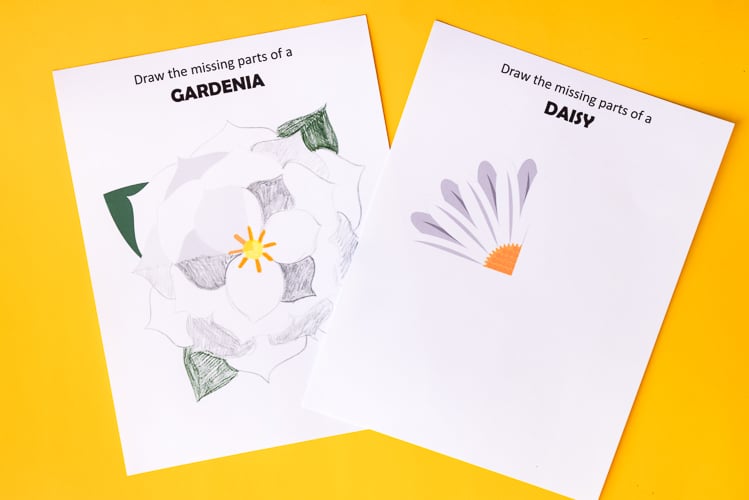
Flower Symmetry Printable Pack for Children
The Flower Symmetry pack consists of ten flowers – a tulip, a sunflower, a carnation, an iris, a daisy, a daffodil, a calla lily, a gardenia, a forget-me-not, and an orchid. There are ten drawing prompts exploring the concept of bilateral symmetry and five drawing prompts exploring the concept of radial symmetry.

A basic understanding of symmetry is necessary for completing the art prompts since they only show half of the flower (in the case of bilateral symmetry) and approximately a quarter of the flower (in the case of radial symmetry). Children are challenged to draw the rest themselves, based on what they see and their understanding of symmetry!
In the process, children have to pay attention to matching colours, drawing correct shapes and counting the correct number of petals, leaves. All in all, the activity goes a long way in practising various elementary math skills.
And it really is fun! It can be both simple and challenging, adapting very well to different ages, so that a preschooler can participate alongside an adult. I admit I like to draw a picture or two together with my children when they work on them.
How to Use the Flower Symmetry Printable Pack
First, have a little talk about symmetry with children. There are two posters Having a real flower or a leaf on hand would help.
After that, just print and draw! You can use pencils, markers, pens – anything. If you want to use paints, print on heavier card stock. If you want to re-use it with different students over and over again, laminate and use dry-erase markers.
Get the Flower Symmetry Pack!
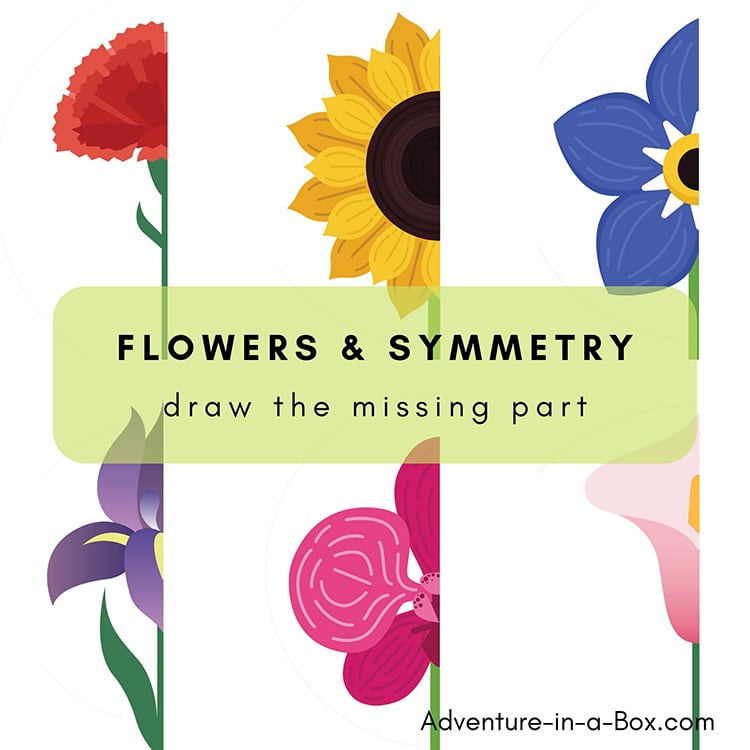
Also Try!
Draw the Missing Half: Insects
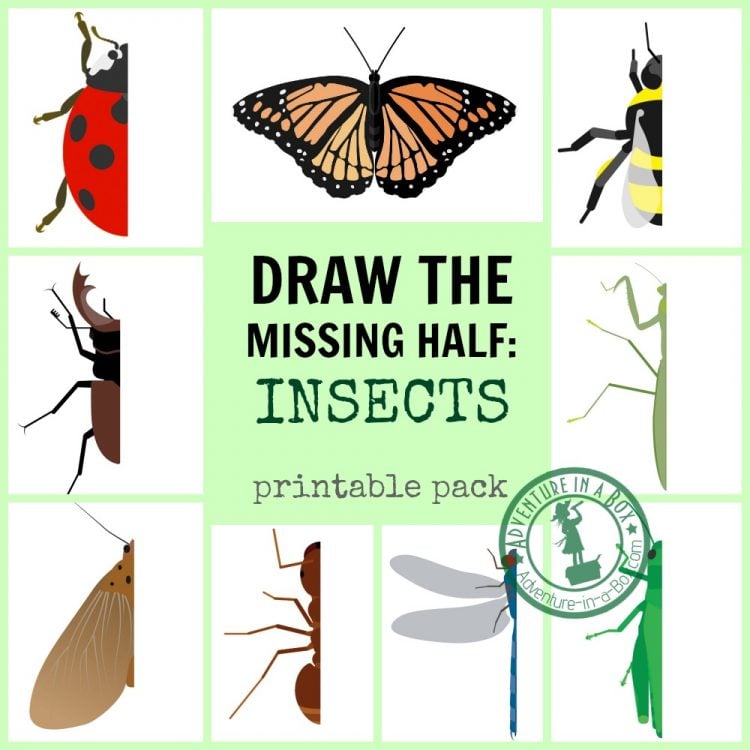
Draw the Missing Half: Vehicles
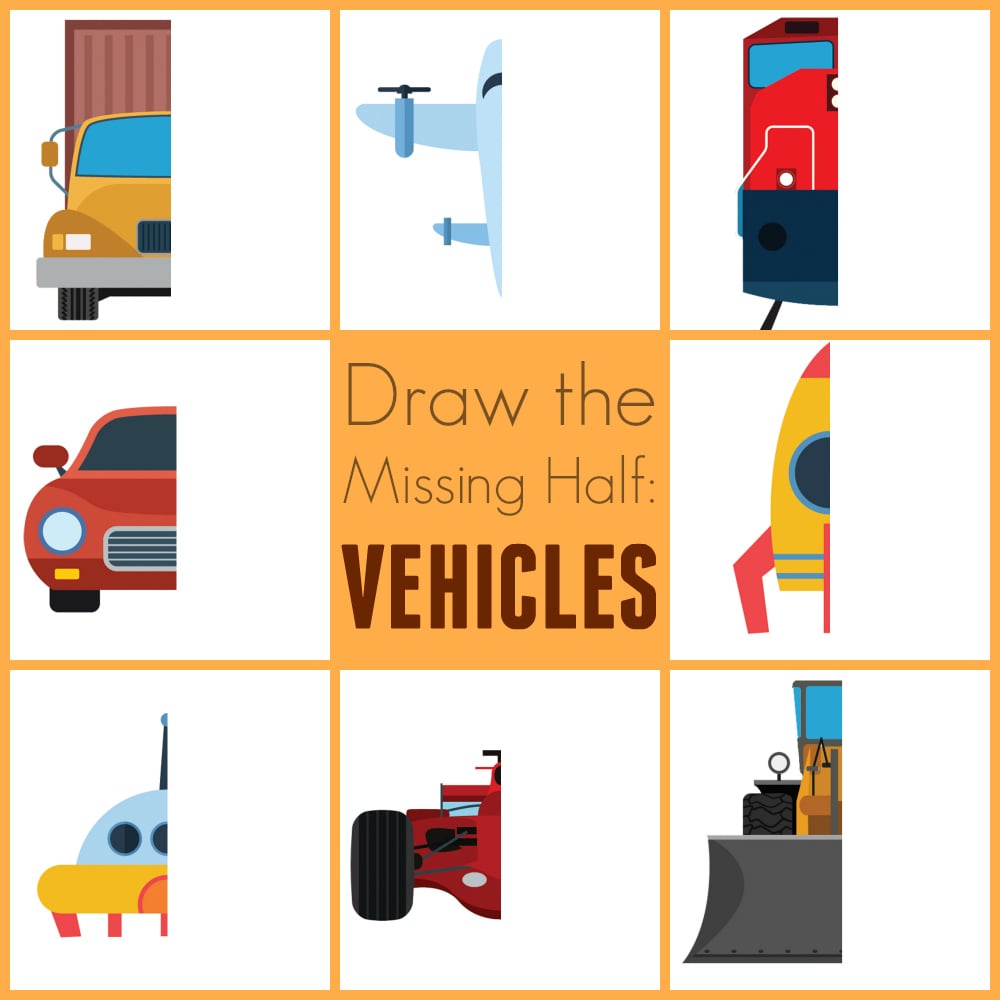
When you use the prompts, we’d be delighted to see your symmetry art! Tag us on facebook or instagram (@adventureinabox).









Could you advise me how much the flower symmetry bundle will be in pounds sterling (UK)?
Thank you